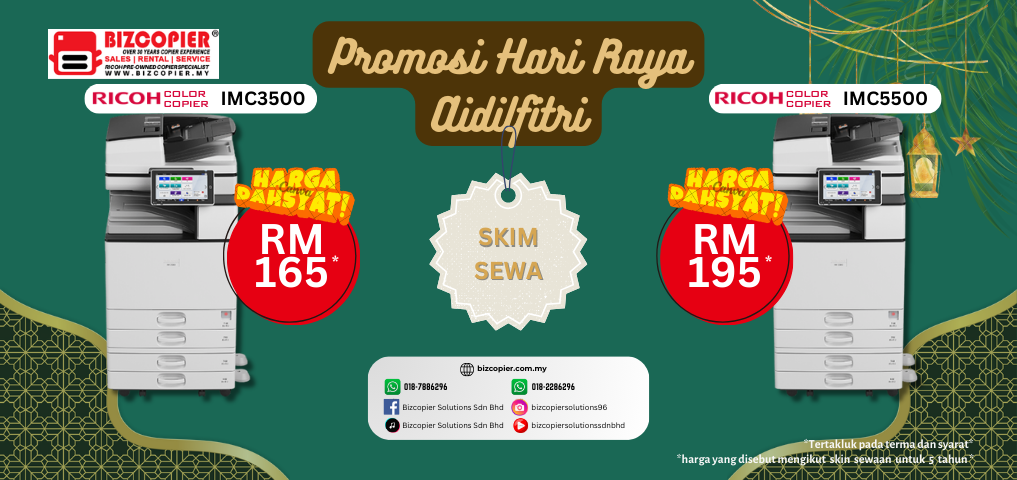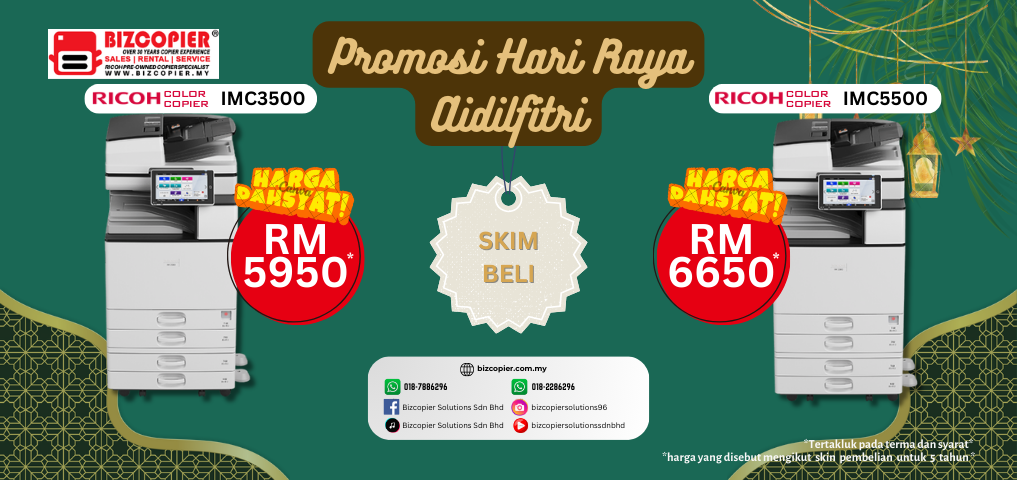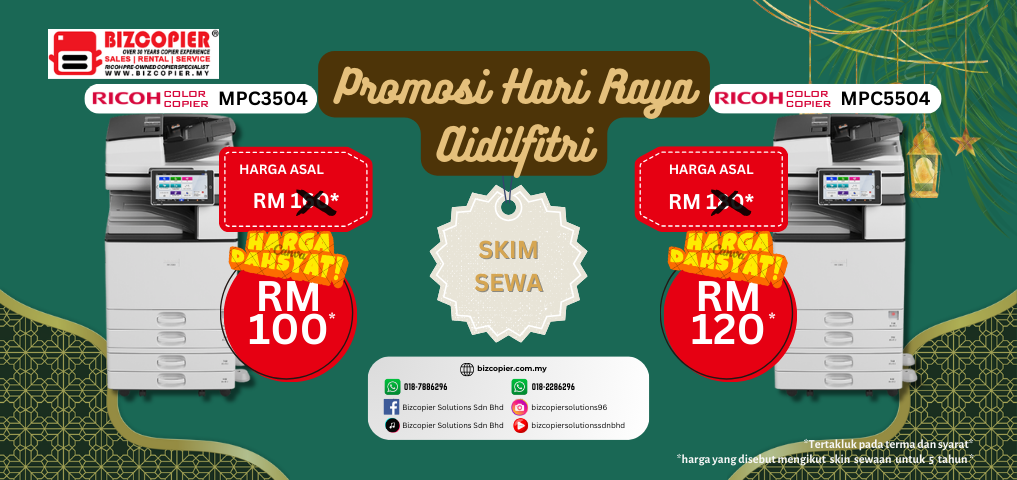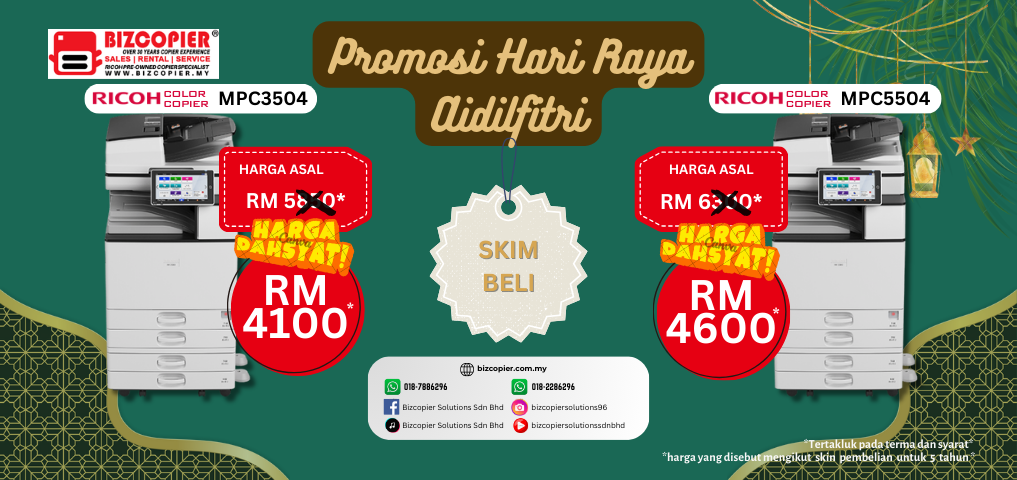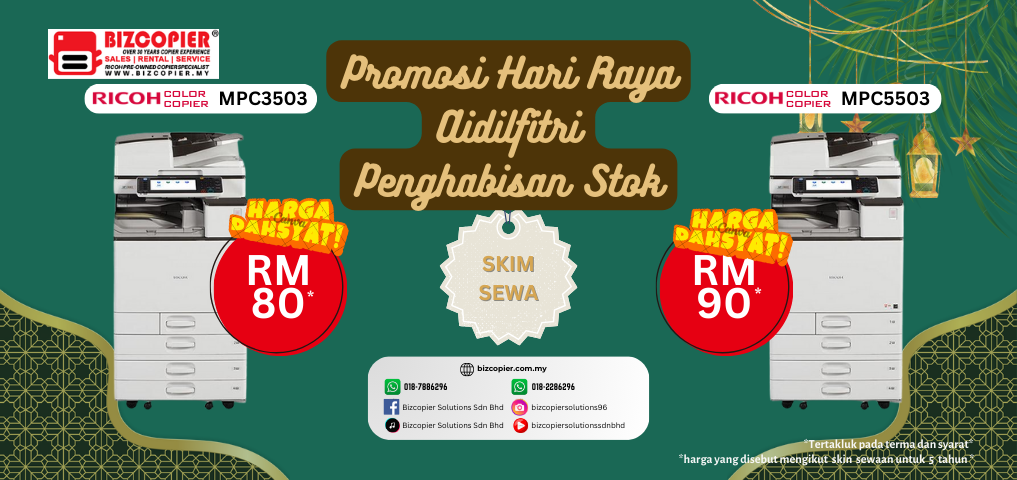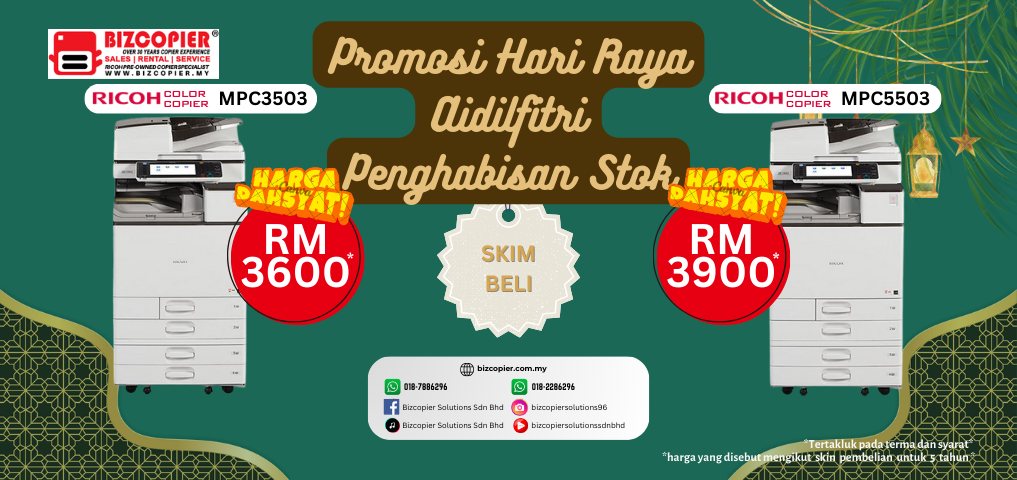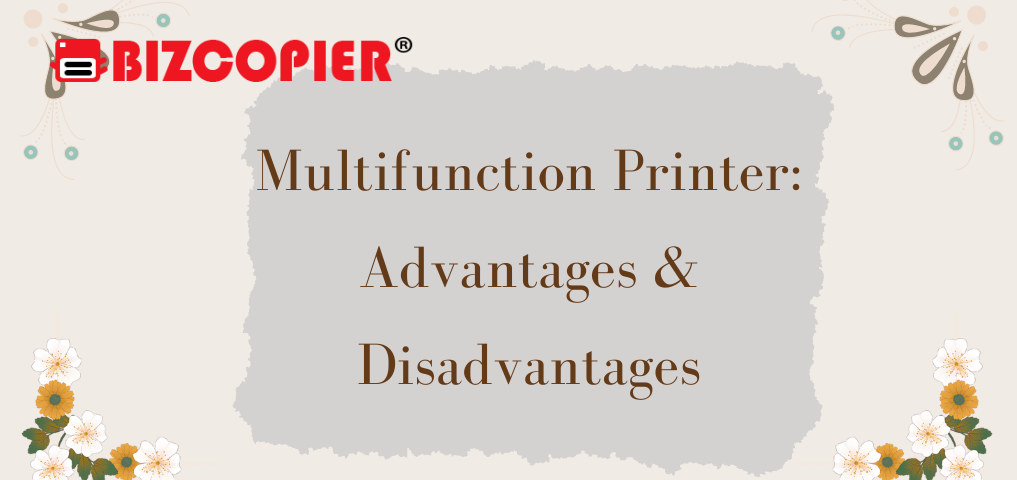
A multifunction printer (MFP) is a versatile device that combines several functions into a single machine, typically including printing, scanning, copying, and sometimes faxing capabilities. This all-in-one solution offers numerous advantages, making it a popular choice in both home and office environments. Firstly, the MFP saves space and reduces clutter by eliminating the need for separate devices for printing, scanning, and copying. It also simplifies workflow and enhances productivity, as users can perform multiple tasks without switching between different machines. Moreover, multifunction printers are often cost-effective, as they eliminate the need to purchase and maintain separate devices, leading to potential savings in terms of upfront costs, energy consumption, and supplies. However, there are also some disadvantages to consider. One drawback is that if a multifunction printer experiences a malfunction or requires maintenance, all functions may be affected, rendering the entire device temporarily unusable. Additionally, if heavy usage is required for one specific function, such as printing, it may lead to increased wear and tear on the machine and potentially result in more frequent breakdowns. Despite these drawbacks, the convenience and versatility provided by multifunction printers make them a valuable tool in various settings, offering an efficient and cost-effective solution for everyday document-related tasks.
What is Multifunction Printers (MFP)?
A multifunction printer (MFP) is a type of device that combines several functions into a single machine. It integrates the capabilities of a printer, scanner, copier, and sometimes a fax machine, all in one compact unit. MFPs are designed to streamline document-related tasks and provide convenience by eliminating the need for multiple devices. They offer the ability to print documents, make digital copies of physical documents, scan and digitize paper documents, and in some cases, send and receive faxes. Multifunction printers are commonly used in both home and office settings, as they provide a comprehensive solution for various document management needs. They can be connected to a computer or a network, allowing users to access the device’s functions from different devices, including laptops, desktop computers, and mobile devices. MFPs are available in a range of sizes and configurations, catering to different usage requirements and budgets.
Features of Multifunction Printers
Multifunction printers (MFPs) offer a wide range of features that enhance productivity and convenience in document management. Here are some common features found in multifunction printers:
1) Printing: MFPs can print documents and images from various sources, including computers, mobile devices, USB drives, and memory cards. They support different paper sizes and types, and some models offer duplex printing for double-sided printing.
2) Scanning: MFPs have built-in scanners that can convert physical documents into digital files. They support flatbed scanning for individual pages as well as automatic document feeders (ADF) for scanning multiple pages at once.
3) Copying: MFPs can make copies of printed documents quickly and easily. They offer options for adjusting copy settings such as brightness, contrast, and paper size. Some models also have advanced features like collating and resizing.
4) Faxing: Certain multifunction printers include fax capabilities, allowing users to send and receive faxes directly from the device. They usually have built-in fax modems and can store frequently used numbers for easy access.
5) Wireless Connectivity: Many MFPs offer wireless connectivity options, such as Wi-Fi and Bluetooth, enabling users to print and scan wirelessly from their computers, smartphones, and tablets. This feature eliminates the need for physical connections and enhances convenience.
6) Network Integration: MFPs can be connected to a local area network (LAN) or Wi-Fi network, enabling multiple users to access the device’s functions and share resources. Network integration facilitates centralized printing and scanning, making it suitable for office environments.
7) Document Management: Advanced MFPs may come with document management features such as optical character recognition (OCR), which converts scanned documents into editable text, and document storage options for organizing and archiving files.
8) Security Features: MFPs often include security features to protect sensitive information. These can include user authentication, data encryption, secure printing, and secure erase functions.
9) Energy Efficiency: Many modern MFPs are designed with energy-saving features, such as automatic sleep mode and low-power consumption during idle periods, contributing to reduced energy costs and environmental impact.
10) Touchscreen Control Panels: Multifunction printers commonly feature intuitive touchscreen control panels that provide easy access to various functions, settings, and menu options.
It’s important to note that the specific features and capabilities of multifunction printers can vary depending on the make and model of the device.
What to Consider When Buying a Multifunction Printer?
When buying a multifunction printer (MFP), it’s essential to consider several factors to ensure that you choose the right device for your needs. Here are some key aspects to consider:
1) Functionality: Determine the specific functions you require in an MFP. Consider whether you need printing, scanning, copying, and/or faxing capabilities. Assess the volume and type of tasks you’ll be performing to ensure the MFP can handle your workload effectively.
2) Print Speed and Quality: Check the MFP’s printing speed, usually measured in pages per minute (ppm), to ensure it meets your requirements. Additionally, consider the print quality in terms of resolution and color accuracy, especially if you need high-quality prints for professional or creative purposes.
3) Paper Handling: Evaluate the MFP’s paper handling capabilities. Consider factors like paper size, paper capacity (both input and output trays), and the presence of automatic document feeders (ADFs) for scanning and copying multiple pages efficiently.
4) Connectivity Options: Assess the connectivity options available on the MFP. Look for features like USB, Ethernet, Wi-Fi, and mobile printing compatibility (such as AirPrint or Google Cloud Print). These features enable seamless integration with your existing devices and allow for flexible printing and scanning options.
5) Software and Compatibility: Check the MFP’s compatibility with your operating system and software applications. Ensure that the device’s drivers and software are compatible with your computer or network. Additionally, consider any additional software features that may be provided, such as document management or scanning utilities.
6) Cost Considerations: Evaluate the upfront cost of the MFP, as well as the ongoing costs for supplies such as ink or toner cartridges. Look for cost-effective options that balance your budget with your expected usage. Consider factors like page yield, cost per page, and the availability of compatible or generic cartridges.
7) Reliability and Durability: Research the reputation of the MFP brand and model for reliability and durability. Read customer reviews and consider factors such as warranty coverage and the availability of technical support or repair services.
8) User-Friendliness: Consider the user interface and control panel of the MFP. Look for features like a touchscreen display or intuitive navigation menus that make it easy to operate and access the MFP’s functions and settings.
9) Security Features: Assess the security features provided by the MFP, especially if you will be handling sensitive or confidential documents. Look for features like user authentication, data encryption, and secure printing options.
10) Future Expandability: Anticipate your future needs and consider whether the MFP offers room for expansion or upgrades, such as additional paper trays or memory expansion.
By carefully considering these factors, you can select a multifunction printer that meets your requirements, enhances productivity, and offers long-term value.
Multifunction Printer Advantages and Disadvantages
Multifunction printers (MFPs) offer several advantages and disadvantages that should be considered when deciding whether to invest in one. Here are some of the key advantages and disadvantages of multifunction printers:
Advantages:
1) Space and Cost Savings: One of the primary advantages of MFPs is their ability to combine multiple functions into a single device, eliminating the need for separate machines for printing, scanning, copying, and faxing. This consolidation saves space in your office or home and reduces equipment costs since you only need to purchase and maintain one device instead of multiple machines.
2) Convenience and Efficiency: MFPs provide convenience and enhance productivity by allowing users to perform various tasks from a single device. You can easily switch between printing, scanning, copying, and faxing functions without the need to move between different machines or transfer documents. This streamlines workflows and saves time.
3) Versatility and Flexibility: MFPs support a wide range of functions and offer various options for document management. They can handle different paper sizes and types, and some models support advanced features like automatic document feeders (ADFs), duplex printing, and wireless connectivity. MFPs also provide the flexibility to print and scan from different devices, such as computers, smartphones, and tablets.
4) Cost-Effectiveness: While the initial investment for an MFP may be higher than purchasing individual devices, over time, multifunction printers can be cost-effective. They often have lower operational costs, as you only need to purchase supplies like ink or toner cartridges for a single device. Additionally, MFPs can reduce energy consumption compared to using multiple devices, resulting in potential energy cost savings.
Disadvantages:
1) Reliability and Downtime: Since multifunction printers combine multiple functions into a single device, if a malfunction occurs or maintenance is required, all functions may be affected. This can lead to temporary downtime and inconvenience while waiting for repairs or replacement parts. It’s important to choose a reputable brand and ensure regular maintenance to minimize these issues.
2) Performance Limitations: MFPs may not perform as well as dedicated machines in terms of speed and functionality. If heavy usage is required for a specific function, such as printing, the overall performance of the device may be slower compared to a dedicated printer. Additionally, some MFPs may have limitations in terms of print quality or scanning resolution, depending on the model and price range.
3) Limited Upgradability: While some MFPs offer options for expansion, such as additional paper trays or memory upgrades, they generally have limited upgradability compared to dedicated devices. If your needs change significantly in the future, you may need to replace the entire MFP rather than upgrading individual components.
4) Single Point of Failure: If a multifunction printer experiences a failure, it affects all functions simultaneously. This contrasts with having separate devices, where a malfunction in one device does not necessarily affect the others. This single point of failure can disrupt productivity until the MFP is repaired or replaced.
By weighing the advantages and disadvantages of multifunction printers, you can make an informed decision about whether an MFP is the right choice for your specific needs.
Multifunction Printers vs. Copier
Multifunction printers (MFPs) and copiers are both office devices used for document management, but they have some key differences. Here’s a comparison between multifunction printers and copiers:
Functionality:
Multifunction Printers: MFPs combine several functions into a single device, typically including printing, scanning, copying, and sometimes faxing. They offer versatility and the convenience of performing multiple tasks from a single machine.
Copiers: Copiers, also known as photocopiers, are dedicated machines designed specifically for making copies of printed documents. They specialize in producing high-quality reproductions of documents quickly and efficiently.
Printing:
MFPs: Multifunction printers can print documents from various sources, such as computers, mobile devices, USB drives, and memory cards. They offer flexibility in terms of paper sizes, types, and print settings. MFPs may provide additional features like duplex (double-sided) printing and wireless connectivity.
Copiers: While copiers primarily focus on document reproduction, some advanced copiers may include basic printing capabilities. However, their printing functionalities are usually more limited compared to MFPs, with fewer options for connectivity and print settings.
Scanning:
MFPs: Multifunction printers have built-in scanners for converting physical documents into digital files. They support flatbed scanning for individual pages and often include automatic document feeders (ADFs) for scanning multiple pages efficiently.
Copiers: Copiers generally do not have scanning capabilities. Their main function is to produce copies of documents, and they may lack the ability to convert physical documents into digital files.
Copying:
MFPs: Multifunction printers can make copies of printed documents similar to dedicated copiers. They offer options for adjusting copy settings such as brightness, contrast, and paper size. Some MFPs also provide advanced features like collating and resizing.
Copiers: Copiers excel in the task of copying documents. They are optimized for high-speed and high-volume copying, with features like automatic document feeding and collating to efficiently produce multiple copies of a document.
Specialized Features:
MFPs: Multifunction printers often come with additional features like faxing capabilities, wireless connectivity, document management tools, and integration with computer networks. They offer a broader range of functions to meet various document management needs.
Copiers: Copiers are focused primarily on copying documents, and their features are tailored towards that purpose. They may have advanced options for image quality, paper handling, and finishing, such as stapling or hole punching.
Space and Cost:
MFPs: Multifunction printers offer space-saving benefits as they consolidate multiple functions into a single device, reducing the need for separate machines. They can be more cost-effective in terms of initial investment and ongoing maintenance, as you only need to purchase and maintain one device.
Copiers: Dedicated copiers can take up more space since they focus solely on copying and may require additional devices for printing, scanning, or faxing. Copiers are typically more expensive than MFPs due to their specialized copying capabilities.
When deciding between an MFP and a copier, consider your specific needs and the volume of each function you require. If you primarily need high-quality copying capabilities and don’t require extensive printing or scanning functionalities, a dedicated copier may be the more suitable option. On the other hand, if you require versatile document management with printing, scanning, copying, and potentially faxing capabilities, an MFP would be a more comprehensive choice.
If you already decide to rent the copier, you can see our Rental Scheme to know the latest price for Ricoh brands! or Contact us to get a quote at 03-3341 6296 | 018-288 6296 | 018-788 6296
Contact BIZCOPIER Now
Get Free Quotation & Special Discounts now!








